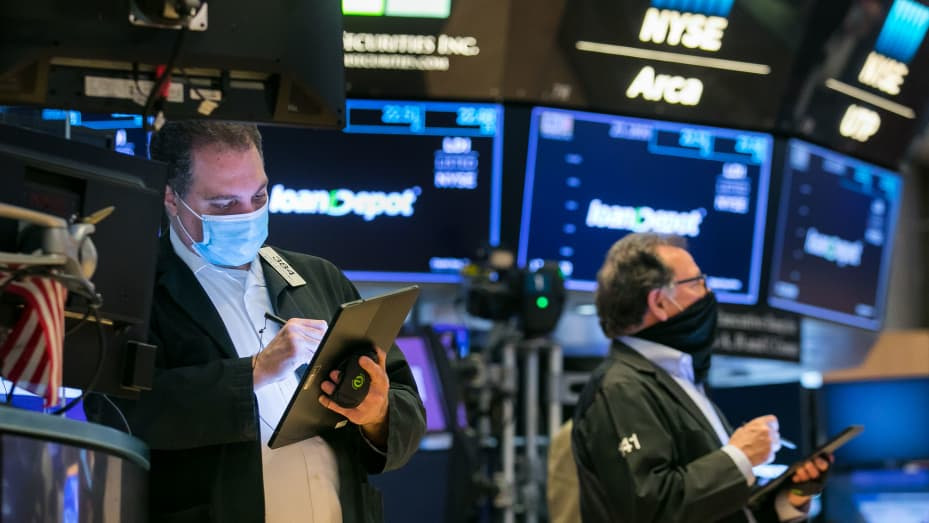Autonomous Driving: A Revolution on the Horizon? (Keywords: Autonomous Driving, Self-Driving Cars, AI, Tesla, Electric Vehicles, Regulations, Investment)
Meta Description: Dive into the exciting world of autonomous driving! Explore the latest news, regulatory changes, investment opportunities, and key players shaping the future of self-driving cars. Discover how this transformative technology is poised to revolutionize transportation and unlock significant economic potential.
This isn't just another article about self-driving cars; this is your deep dive into a technological revolution poised to reshape urban landscapes and global economies. We're not talking about incremental changes—we're discussing a complete paradigm shift in personal and commercial transportation. Picture this: no more traffic jams caused by human error, smoother commutes, safer roads, and a dramatic reduction in accidents. That's the promise of autonomous driving, and the potential is simply breathtaking! But this isn't a futuristic fantasy; it's happening now. This thorough examination delves into the critical regulatory landscape, the key players driving innovation, the lucrative investment opportunities, and the potential pitfalls lurking around the corner. We'll dissect the latest news, providing insightful analysis grounded in both firsthand industry knowledge and rigorous research from reputable sources. Whether you're a seasoned investor, a tech enthusiast, or simply curious about the future of mobility, this comprehensive guide will equip you with the knowledge you need to navigate this rapidly evolving sector. Get ready to buckle up—this journey is going to be wild!
Autonomous Driving: The Race to the Future
The autonomous driving (AD) industry is exploding, a veritable gold rush of innovation, investment, and regulatory wrangling. It's a space where established automakers are battling nimble tech giants, and where the potential rewards are as vast as the challenges are complex. The recent news regarding potential regulatory changes in the US, particularly the whispers coming from the incoming administration about loosening restrictions, has sent shockwaves through the industry. This isn't just good news for established players like Tesla; it's a green light for a whole host of companies – both large and small – working to bring autonomous vehicle (AV) technology to market.
The shift from human-driven vehicles to sophisticated, AI-powered systems represents more than just a technological upgrade. It's a profound societal and economic transformation. This change will impact everything from urban planning and infrastructure development to employment and insurance markets. The ripple effects will be felt across numerous sectors, creating both unprecedented opportunities and potential disruptions. It's a time of immense potential, but also a time demanding careful consideration and strategic planning.
The Regulatory Landscape: A Balancing Act
The regulatory landscape surrounding AD is, to put it mildly, a minefield. Different countries and even different states within the US have wildly varying approaches to regulations. Some are embracing a more hands-off approach, encouraging innovation through pilot programs and relatively permissive rules. Others are taking a more cautious stance, prioritizing safety and establishing stringent testing protocols. This regulatory patchwork creates both opportunities and challenges for companies vying for market share.
For example, the rumoured easing of regulations in the US could offer a major advantage to companies like Tesla, who have already invested significantly in their Autopilot and Full Self-Driving (FSD) systems. However, even with relaxed regulations, companies will still need to meet rigorous safety standards to ensure public confidence and avoid potential liability issues. This demands a careful balancing act: fostering innovation while maintaining public safety. Navigating this complex regulatory environment will be crucial to success in the AD market.
Tesla: Leading the Charge (or is it?)
Elon Musk, the visionary (and controversial) CEO of Tesla, has staked Tesla's future, quite literally, on the success of its autonomous driving technology. Tesla's Autopilot system, while currently considered driver-assistance technology (Level 2 autonomy), represents a significant step towards fully autonomous driving. However, the road to Level 5 autonomy (fully self-driving in all conditions) is still a long and winding one. Despite challenges (and some high-profile accidents), Tesla’s aggressive approach, coupled with its large fleet of vehicles equipped with sensor technology, gives it a significant head start in data collection—a crucial element in training and improving autonomous driving algorithms. However, it's not the only player in the game. The competition is fierce, and the race is far from over.
Beyond Tesla: A Diverse Ecosystem
While Tesla grabs the headlines, it’s crucial to remember that the autonomous driving sector is a vibrant ecosystem, comprising a diverse range of companies. We have traditional automakers like GM, Ford, and Volkswagen investing heavily in autonomous technology, alongside tech giants such as Google (Waymo), Apple, and Baidu. These companies bring different strengths and perspectives to the table, fostering a competitive environment that accelerates innovation. Furthermore, a large number of smaller companies are developing niche technologies and solutions that are essential components within the broader autonomous driving system. This ecosystem is critical for the rapid development and deployment of safe and reliable self-driving cars.
Investment Opportunities: A High-Stakes Game
The autonomous driving sector is attracting massive amounts of investment, from venture capital firms to large institutional investors. The potential returns are enormous, but so are the risks. Investing in this sector requires a deep understanding of the technology, the regulatory landscape, and the competitive dynamics. Due diligence is crucial, and diversification is a wise strategy. While promising, it is key to remember that the autonomous driving market is still relatively nascent and subject to significant uncertainties.
Early investments in companies like Tesla and other key players in the autonomous driving ecosystem has already yielded substantial returns for early investors. However, choosing the right companies is of paramount importance. A thorough understanding of the company's technology, its business model, and its management team is necessary before making any investment decisions.
Challenges and Pitfalls: Navigating the Road Ahead
The path to widespread adoption of autonomous vehicles is not without its challenges. Technical hurdles remain, including the development of robust and reliable sensor systems, the creation of sophisticated AI algorithms that can handle complex and unpredictable driving situations, and addressing cybersecurity concerns. Ethical considerations are also paramount, including questions about liability in the event of accidents involving autonomous vehicles. Addressing these challenges will require collaboration between industry, government, and academia.
Frequently Asked Questions (FAQs)
Q1: When will fully autonomous cars be widely available?
A1: There's no single answer, as it depends on factors like regulatory approvals and technological advancements. While some optimistic predictions point towards widespread availability within the next decade, a more realistic timeline might place it further out. Piecemeal adoption, focusing initially on specific use cases (e.g., robotaxis in controlled environments), is more likely in the near term.
Q2: Are autonomous cars safe?
A2: The safety of autonomous vehicles is a critical concern. While the technology is constantly improving, and early results suggest that they could significantly reduce accidents caused by human error, there is still a long way to go. Rigorous testing and ongoing development are crucial to ensuring their safety.
Q3: What are the ethical implications of autonomous vehicles?
A3: Autonomous vehicles present numerous ethical dilemmas, particularly concerning decision-making in unavoidable accident scenarios (the "trolley problem"). Developing ethical guidelines and programming autonomous systems to make morally sound decisions is a significant ongoing challenge.
Q4: How will autonomous driving impact employment?
A4: The impact on employment will be significant, particularly for professional drivers. However, the transition will also create new jobs in areas such as software development, AI engineering, and maintenance of autonomous vehicle systems.
Q5: What is the role of government regulation in the development of autonomous vehicles?
A5: Government regulation plays a crucial role in ensuring the safety and responsible deployment of autonomous vehicles. Clear and consistent regulations are needed to balance innovation with safety and address public concerns.
Q6: How can I invest in the autonomous driving industry?
A6: Investment opportunities range from direct investments in companies developing autonomous technology to investing in exchange-traded funds (ETFs) that focus on the automotive or technology sectors. Thorough research is essential before making any investment decisions.
Conclusion: The Autonomous Revolution is Here
The journey towards widespread adoption of autonomous vehicles will undoubtedly be bumpy, with challenges to overcome and surprises along the way. However, the potential benefits—from increased safety and efficiency to improved accessibility and reduced traffic congestion—are too substantial to ignore. The autonomous driving revolution is not a matter of if, but when. And as the regulatory landscape shifts and technological advancements accelerate, now is the time to pay close attention to this transformative sector. The race is on, and the future of transportation is being written as we speak.



